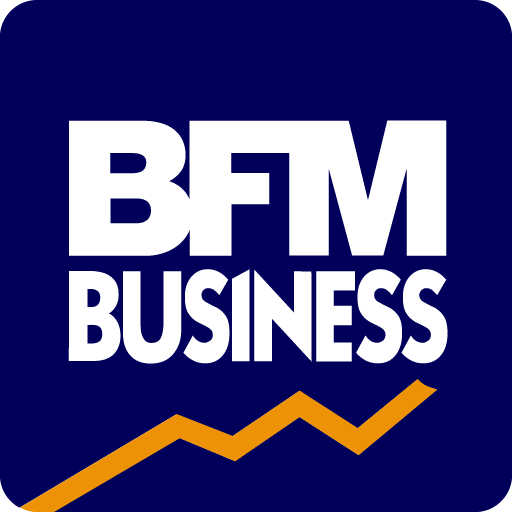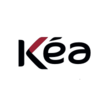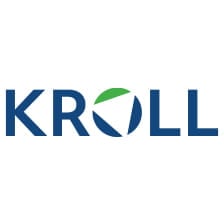Summary of our market study
French bioethanol market estimated at $4 billion
The global bioethanol market, valued at $83.4 billion in 2023, is expected to grow at a CAGR of 6.6% to 2028.
Bioethanol, mainly used as a renewable fuel blended with gasoline, is experiencing increased demand due to technological advances and the trend towards greener energy sources.
The United States, Brazil and Germany are the main producers, with France ranking fourth worldwide, contributing 5% to global production.
France is heavily dependent on imports from European countries.
A growing appetite for bioethanol in France
As the world's fourth-largest producer, with over 2 million tonnes produced annually, France has made great strides towards integrating bioethanol into its energy mix in the transport sector. The French bioethanol market can be estimated at around $4 billion. This estimate is based on France's 5% contribution to the global market ($83 billion)
As bioethanol represents a significant proportion of the biofuels consumed in gasoline engines, its footprint in the French fuel landscape is quite significant. SP95-E10, a fuel containing up to 10% bioethanol, will account for over 55% of total gasoline consumption by 2022.
This explosion in demand is due to a number of factors, not least the growing popularity of "Flex Fuel" vehicles and bioethanol kits. These kits enable conventional vehicles to adapt to bioethanol-based fuels. The use of "Flex Fuel" vehicles and bioethanol conversion kits is on the rise, with 85,000 kits sold in 2022, tripling sales compared with 2021. France has seen a 67% year-on-year increase in the fleet of E85-compatible vehicles.
The country has a progressive biofuels plan that requires a minimum incorporation of biofuels into conventional fuels. In line with European targets, this plan calls for a 9-10% incorporation rate by 2023.
Bioethanol market players
Manufacturers and installers of production units
- Maguin: a leading equipment manufacturer
- TechnipFMC: a leader in the design and construction of production units.
- Vinci Energies: Present worldwide, Vinci Energies brings its expertise in energy efficiency and project management, installing systems that support the sustainable production of bioethanol.
- AtkinsRealis: This company plays a key role in setting up bioethanol production facilities, ensuring that the process meets industry standards and sustainability criteria.
Agricultural player
- Tereos Groupe: As a major producer in the bioethanol industry, Tereos supplies biofuel for transportation.
- Cristal Union: Another heavyweight in bioethanol production, Cristal Union uses agricultural crops such as sugar beet to produce fuel.
- Bioénergie du Sud-Ouest (Vertex Bioenergy): This regional producer emphasizes the importance of local bioethanol production.
Automotive innovators adopting Flex Fuel technology
- Ford
- Renault :
- Volvo Group
- Stellantis (Peugeot, Citroën, Jeep, Opel)
- Volkswagen Group
to understand this market
Detailed content of our market study
 Inforamtion
Inforamtion
- Number of pages : 35 pages
- Format : Digital and PDF versions
- Last update :
 Summary and extracts
Summary and extracts
1 Market overview
1.1 Market overview and definition
Bioethanol is a renewable, liquid fuel for gasoline engines, produced from biomass, i.e. plant matter. There are different types of bioethanol, depending on the raw material used: corn, beet, rapeseed... There are also different generations of bioethanol, with the first generation using raw materials that are also used for human consumption, thus competing with our vital needs. The current challenge is to develop the 2ᵉ and 3ᵉ generations of bioethanol in order to resolve this conflict of use.
Bioethanol is overwhelmingly used as a fuel, blended into gasoline with fossil fuels. There are three types of fuel using bioethanol on the French market:
- sP98 and SP95 containing up to 5% bioethanol, for petrol and flex-fuel cars;
- sP95-E10 containing 10% bioethanol, for petrol and flex-fuel vehicles;
- superethanol-E85 (or simply E85), containing 65% to 85% bioethanol, for flexible-fuel cars only.
Global bioethanol production is on an upward trend, and the market is valued at $83.4 billion in 2023. It is expected to grow at a CAGR of 6.6% until 2028. The world's leading producers are the United States, Brazil and Germany. Global production is set to rise sharply over the next few years, as government regulators set ever-higher incorporation rates in fuels for sale on the market. At the same time, demand for ethanol is driven by technological advances and increased research. The lower production costs of these energy sources should lead to increased consumption.
France, a 4ᵉ world producer, is a major European player. It is the main supplier of the raw materials used in bioethanol production, but also relies heavily on imports, particularly from European countries. Most of its production is destined for domestic consumption, and bioethanol-based fuels are becoming increasingly popular, as in the case of SP95-E10, which accounted for 56% of petrol consumed in France in 2022.
The bioethanol sector is therefore set to expand significantly in the years ahead, and the growing popularity of "Flex Fuel" vehicles and bioethanol kits, making conventional vehicles compatible with new fuels such as E85, are further growth factors to be taken into account.
1.2 The global bioethanol market
The global bioethanol market is estimated at $**.* billion in ****, and is expected to grow at a CAGR of *.*% to ****.
Global bioethanol market size World, **** - ****, in $ billions Source: ****
Against a backdrop of depleting energy resources and the promotion of renewable energies, notably through the United Nations Sustainable Development Goals(***), the biofuels market, including of course bioethanol, is expected to grow at an ever-increasing pace. Technological advances and increased research into the production of ethanol from algae, thanks to their rapid production rate and natural presence in the sea, should boost market demand, especially as these energy sources are less costly to produce. As a result, an increase in consumption is expected due to the lower prices of biofuel compared to diesel and gasoline[***].
The global bioethanol market is mainly driven by government regulators who favor its production. This trend is supported by increased demand for blends in gasoline and government initiatives to promote the use of greener fuels. Strict regulations have pushed companies to focus on producing cleaner, cheaper energy. Technological advances have enabled the development of second- and third-generation bioethanol, contributing to market viability. In addition, the global focus on energy security, in response to rising energy demand, offers lucrative ...
1.3 The French bioethanol market
It's extremely difficult to calculate the size of the bioethanol market in France. This is because ethanol is incorporated into a variety of fuels sold at different prices, and is produced from many different raw materials, the most widely used of which is corn.
Breakdown of raw materials used in ethanol production France, ****, as % of total Source: ****
However, we know that French production accounts for *% of world production, so we can assume that France's share of the global bioethanol market is also *%. As this market is valued at $**.* billion in ****, we can estimate the French market at $*.** billion in ****.
Moreover, ethanol accounts for the bulk of biofuels in the gasoline sector in France.
Breakdown of biofuels in the gasoline sector France, ****, in Source: ****
In fact, ethanol accounts for three-quarters of these biofuels. In particular, it is found in SP**-E**, the most widely used fuel in France since ****, which contains up to **% ethanol. In ****, this fuel accounted for **% of total petrol consumption, up from **.*% in ****. In December ****, this proportion even reached **.*%[***]. Volumes produced in France continue to rise.
Ethanol production volumes France, **** - ****, in thousands of m* Source: ****
Volumes produced are therefore growing fast, peaking at a record *.* million m* in ...
1.4 Significant imports
France consumes most of the bioethanol it produces, and its export balance varies from year to year, being positive in **** but negative in ****.
Volume of bioethanol consumed and export balance France, **** - ****, in thousands of hL Source: ****
In ****, domestic consumption of bioethanol, whether produced locally or imported and sourced from local or foreign feedstocks, reached ** million hectoliters (***). This represents an increase of **% on the year ****.
During the same year, France imported *.* million hectolitres (***) of undenatured ethyl alcohol, an increase of **% on ****. These imports came mainly from major European ports.
Main French suppliers of undenatured ethyl alcohol World, ****, as % of total Source: ****
French exports of undenatured ethyl alcohol totaled *.* Mhl in ****, down **% on ****. Most of these exports were destined for European Union countries.
Main buyers of French undenatured ethyl alcohol World, ****, as % of total Source: ****
The United Kingdom moves up to a prominent position in this ranking, after falling much lower following the closure of borders due to Brexit.
The majority of bioethanol manufactured in France is made from raw materials harvested abroad, although France is the main supplier.
Origin of raw materials used in bioethanol production World, ****, in thousands of m* Source: ****
Brazil is the biggest supplier of raw materials after ...
2 Demand analysis
2.1 Bioethanol, increasingly present in French fuels
Bioethanol is used in France in blends with commercial gasolines, notably in SP**-E* (***).
Source: ****
ETBE (***) is a chemical compound produced from bioethanol and isobutene. It is designed to be incorporated into commercial gasolines up to a maximum :
Source: ****
ETBE (***) has historically been the preferred method for incorporating ethanol into gasoline, due to its lesser technical difficulties compared to ethanol. However, ETBE is only partially renewable, unlike bioethanol, which is fully renewable. When calculating the quantities of biofuels incorporated into fuels, only the proportion of energy of renewable origin is taken into account, which is **% for ETBE. However, a fully sustainable isobutene produced from sugar should soon be available. The ETBE resulting from this isobutene and ethanol will produce a fully sustainable biofuel[***].
2.2 Bioethanol-based gasolines, a fast-growing consumer segment
SP**-E**, also known as "E**" (***), accounted for **% of total gasoline consumption, up from **.*% in ****. By December ****, this figure had risen to **.*%, with SP**-E** recording a slight increase in fuel consumption of between *% and *% over SP**. However, its price per liter is a few euro cents lower[***].
Market share of different gasolines France, ****, in Source: ****
La Collective du bioéthanol highlights the significant increase in consumption of superethanol E**, a fuel containing between **% and **% bioethanol, launched in France in ****. Usable by "Flex-E**" or "Flex Fuel" vehicles (***), as well as by cars equipped with E** boxes, its consumption has increased by **% in **** compared with ****. Its share of the petrol market has also risen, from *% in **** to *.*% in ****, reaching *.*% in December ****[***].
sales of superethanol-E** France, **** - ****, in thousands of m* Source: ****
The Collective du Bioéthanol carried out a study in the summer of **** to find out more about motorists who run on superethanol-E** (***). As a result, this fuel reaches all socio-professional categories.
Socio-professional categories of motorists using superethanol-E** France, ****, in Source: ****
E** is identified as the fuel preferred by working people for their daily journeys. Indeed, **% of users of this fuel use it for their home-to-work journeys. The switch to driving ...
2.3 A conflict over the use of raw materials
The bioethanol industry systematically supplies two markets from its agricultural production: the food and feed markets (***) or beet, systematically generates animal feed. Indeed, each kilo of bioethanol produces an average of * kg of protein-rich feed. More precisely :
* kg of cereals yield * kg of ethanol, * kg of spent grain (***) and * kg of biosourced CO*which can be recovered to produce sparkling water or synthetic fuels; * liters of beet bioethanol produce * kg of cellulose-rich beet pulp for animal feed. These locally available feeds enable livestock farmers to reduce their dependence on GMO soybean meal, often imported from South America, where it is associated with deforestation risks.
It's also worth noting that palm oil and soy, which are responsible for deforestation, are not used in bioethanol production, as they contain no sugar or starch. In fact, the French Parliament has excluded them from the TIRUERT, a scheme which encourages fuel distributors to use renewable energies and aims to avoid imported deforestation.
Beet is used in several sectors:
for human consumption, to produce sugar from sugar beet ; for animal feed, beet pulp is transformed into animal feed; for the production of ethanol, obtained from the alcoholic fermentation of beet sugar and sugar residues.
In ...
2.4 Demand driven by Flex Fuel engines and bioethanol kits
Many vehicles are not originally compatible with the use of bioethanol as a fuel. Today, however, there's a solution - the bioethanol kit- that makes these vehicles compatible with these new fuels.
Vehicles fitted with "Flex Fuel" engines are those that are directly compatible with bioethanol, so bioethanol kits are not intended for them. The latter make it possible to "transform" a conventional engine into a "Flex Fuel" engine. While most vehicles built after **** are more or less compatible with petrol biofuels, not all are to the same extent, and it is therefore often advisable to use these kits[***].
The kit is an approved box designed for vehicles meeting two criteria:
euro * vehicle or more ; sP**-E** compatible.
The cost of an ethanol box, including labor, varies according to vehicle type. On average, the price is just under €*,***. However, kits are available from ***€. For the most expensive models, the price can be just over €*,***[***].
A "Flex Fuel" vehicle is a type of motor vehicle that can run on different types of petrol. It can use Superethanol-E**, SP**-E**, SP** and SP**, or a combination of these fuels, in a single tank. This flexibility enables users to choose the type of fuel ...
3 Market structure
3.1 Value chain
Source: ****
The value chain above summarizes the main methods used to produce bioethanol, right up to its incorporation into gasoline. Corn, wheat and beet are in fact the three main raw materials used in making bioethanol (***). There are other techniques for producing bioethanol, and there is a wide variety of players in this sector, which we focus on in the next section.
3.2 How the biofuel industry works
As bioethanol is a product of the biofuels sector, we're going to detail the different segments of this sector and the professions encountered within it.
TheInterprofession des huiles et protéines végétales(***), founded in ****, represents the vegetable oil and protein sector. Its aim is to promote sustainable agriculture that optimizes the management of resources such as water, soil and energy. It has several missions of general interest, including
coordinating research programs the promotion of products such as oils (***), oilcakes and plant proteins; economic organization and dissemination of market information.
The professions involved in the vegetable oils and proteins sector are very diverse, ranging from agriculture to industry, with a range of different expertises. Farmers, technicians, collectors, processors and industrialists all work together to produce quality products that comply with health and environmental standards. The professions represented by the interprofession fall into three main categories.
Farming is essential to the production of food raw materials. In France, around ***,*** of the country's one million farmers specialize in the production of oilseeds and protein-rich plants such as rapeseed, sunflower, soya, linseed, peas, field beans, lupins and alfalfa. Today's farmers are responsible not only for growing and raising crops, but also for marketing ...
3.3 Overview of the bioethanol sector
The main mission of the Collective du bioéthanol, an organization represented by theAssociation Interprofessionnelle de la Betterave et du Sucre(***), is to disseminate information about the bioethanol industry. This mission is aimed not only at professionals in the sector, but also at the general public[***].
France is structured around large plants that produce the majority of ethanol used as fuel, with average production set to reach ***,*** hectolitres in ****. **% of national production will be concentrated with * main manufacturers in ****:
Cristal Union Tereos Vertex Bioénergie du Sud-Ouest.
The French bioethanol sector represents some *,*** direct jobs, from seed production to bioethanol processing and delivery to oil depots, as well as some *,*** indirect and induced jobs[***].
3.4 The gasoline sector in France
In ****, sales of road fuels reached **.* million m*, an increase of *.*% on the previous year 's figure of **.* million m*.the share of petrol in this total increased from **.*% in **** to **.*% in ****. This increase of almost *% underlines a slight growth in the use of gasoline, to the detriment of diesel, in the road sector over this one-year period.
In ****, the number of service stations in France will be **,***, down slightly on the previous year 's figure of **,***. The current trend is for traditional service station networks to be replaced by large and medium-sized retailers (***), with market shares distributed as follows:
Distribution of service stations between traditional networks and supermarkets France, ****, in Source: ****
Bioethanol will account for *.*% of the petrol market in ****, with *** million liters sold[***].
4 Offer analysis
4.1 The different generations of bioethanol
Bioethanol is one of the biofuels produced from biomass, which includes raw materials of plant, animal or waste origin. Biofuels, derived from biomass, are used for energy in transport and heating. Mainly used as additives to fossil fuels, they are divided into three generations based on biomass origin and transformation processes. The first generation is already industrialized, while the second is under development. Regulations distinguish between conventional biofuels, made from feedstocks that compete with food, and advanced biofuels, made from other feedstocks[***].
They are commonly blended with fossil fuels for their use. The incorporation of conventional biofuels is limited to *% of fuel energy. There are two main biofuel production methods, one for "gasoline" biofuels and the other for "diesel" biofuels.
The "gasoline" biofuel sector for gasoline-powered vehicles in France comprises ethanol, its derivative ETBE (***) and synthetic bio-essences. According to **** data, *.*% of the energy contained in petrol was of renewable origin.
In France, the production of ethanol of agricultural origin, or bioethanol, is based mainly on the use of sugar beet and cereals such as wheat and corn (***). It is referred to as first-generation bioethanol because it is produced from raw materials that are also consumed by humans as part of their ...
4.2 Advantages and disadvantages of bioethanol
The use of biofuels blended with traditional fuels in the transport sector aims to meet several challenges:
reducing greenhouse gas emissions : the CO* emitted when bioethanol is burned in engines is of atmospheric origin, captured and absorbed by plants as they grow. Moreover, bioethanol does not emit particles during combustion[***]; anticipate the depletion of oil reserves: as a product of plant origin (***), bioethanol is a renewable energy source; reduce energy dependence on oil; provide an additional outlet for agricultural products; create a waste-to-energy chain.
In addition, a new fuel containing **% ethanol, called ED**, was authorized in France in February ****. ED** was introduced specifically for buses and coaches equipped with compression-ignition engines running solely on this fuel. As a result, more and more vehicles will be using bioethanol.
Bioethanol produced in France saves over **% in CO* emissions compared with fossil gasoline, when the complete life cycle is analyzed. In absolute figures, bioethanol production in France generates an annual saving of * million tonnes of CO* compared with fossil gasoline. This is equivalent to the environmental impact of ***,*** cars that would not emit CO*[***].
In the current context of global warming and fluctuating oil prices, biofuels, produced from biomass, offer a renewable energy alternative. ...
4.3 Bioethanol, an economical fuel
The bioethanol sector has certainly seen an increase in agricultural costs and energy prices, particularly gas. However, despite these increases, superethanol E** maintains its main advantage: its pump price remains competitive with other fuels. The table below illustrates this, with average prices for a full tank in October ****:
Source: ****
E** is still **% to **% cheaper than "traditional" fuel, despite a soaring price per liter. In fact, in ****, the price of superethanol-E** jumped by an average of **.**% in mainland France. There were even service stations where this fuel was sold at the same price as diesel or unleaded, with prices as high as €*.*** a liter[***].
SP**-E** is a fuel that costs * to * euro cents less per liter than SP**, a price differential mainly due to a lower tax rate that has remained stable in recent years. Despite slightly higher consumption than SP**, this difference is almost negligible, estimated at around *%, or three times less than the difference between SP** and SP**.the difference caused by under-inflating tires by *.* bar, according to information provided by the Collective for Bioethanol[***].
5 Regulations
5. Current regulations
France's Energy Transition Law for Green Growth, enacted on August **, ****, sets ambitious goals for reducing the use of fossil fuels. It provides for an increase in the proportion of renewable energies, particularly advanced biofuels, in road and air transport, in order to achieve these goals. This measure also contributes to the Paris Agreement, which aims to limit global warming to less than *°C, ideally *.*°C[***]. Introduced in ****, France's Biofuels Plan sets targets for the minimum percentage of biofuels to be incorporated into gasoline and diesel.
Source: ****
Bioethanol, either pure or in ETBE, which contains the equivalent of **% by volume, is the main means of achieving this target. These obligations are part of a European objective defined by the Renewable Energies Directive *. article ** of the French Energy Transition Law for Green Growth stipulates that priority must be given to the development of advanced biofuels, while preserving investment in conventional biofuel production channels. Directive ****/****, also known as "CASI" (***), obliges states to set a target for the incorporation of advanced biofuels, which is gradually incorporated into the tax. To achieve these ambitious targets, a number of measures have been introduced, including increasing the percentage of biofuels incorporated into the fuels distributed, and authorizing fuels ...
6 Positioning the players
6. Market segmentation
- APM Maersk
- Ford
- Renault Groupe
- Volvo Group (Renault Trucks et Volvo Trucks)
- Stellantis (Groupe PSA et Fiat)
- Volkswagen Group
- TechnipFMC
- Vinci Energies
- Tereos Groupe
- Cristal Union
- Bioénergie du Sud-Ouest
- AtkinsRéalis
- Maguin
All our studies are available online in PDF format
Take a look at an example of our research on another market!
 Choosing this study means :
Choosing this study means :
Access to more than 35 hours of work
Our studies are the result of over 35 hours of research and analysis. Using our studies allows you to devote more time and added value to your projects.
Benefit from 6 years' experience and over 1,500 industry reports already produced
Our expertise enables us to produce comprehensive studies in all sectors, including niche and emerging markets.
Our know-how and methodology enable us to produce reports that offer unique value for money.
Access to several thousand articles and paid-for data
Businesscoot has access to all the paid economic press as well as exclusive databases to carry out its market research (over 30,000 articles and private sources).
To enhance our research, our analysts also use web indicators (semrush, trends, etc.) to identify market trends and company strategies. (Consult our paying sources)
Guaranteed support after your purchase
A team dedicated to after-sales service, to guarantee you a high level of satisfaction. +44 238 097 0676
A digital format designed for our users
Not only do you have access to a PDF, but also to a digital version designed for our customers. This version gives you access to sources, data in Excel format and graphics. The content of the study can therefore be easily retrieved and adapted for your specific needs.
 Our offers :
Our offers :
the bioethanol market | France
- What are the figures on the size and growth of the market?
- What is driving the growth of the market and its evolution?
- What is the positioning of companies in the value chain?
- Data from several dozen databases
Pack 5 études (-25%) France
- 5 études au prix de 74 €HT par étude à choisir parmi nos 1200 titres sur le catalogue
- Conservez -25% sur les études supplémentaires achetées
- Choisissez le remboursement des crédits non consommés au terme des 12 mois (durée du pack)
Consultez notre catalogue d’études sectorielles


















